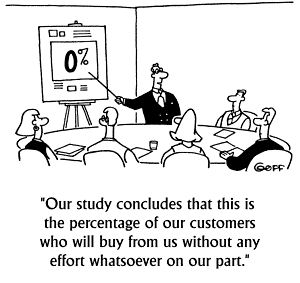 You might think it’s pointless to identify future competitors when it’s hard enough trying to forecast sales and uncover existing competitors’ strategies. However, you need to take invisible competition into account when developing your firm’s long-term strategies or plans, especially plans for global expansion. In fact, just thinking about new, future competition is worthwhile for the following reasons:
You might think it’s pointless to identify future competitors when it’s hard enough trying to forecast sales and uncover existing competitors’ strategies. However, you need to take invisible competition into account when developing your firm’s long-term strategies or plans, especially plans for global expansion. In fact, just thinking about new, future competition is worthwhile for the following reasons:
- It facilitates the long-term view.
- It forces you to look beyond the obvious and evaluate new international players; disparate companies joining in a potential alliance, joint venture, or merger.
- It helps you identify future business-building opportunities for your own company.
This link between what people considered two very disparate companies spurred thinking about competition we cannot easily envision, or what is called “Invisible Competition” Competition isn’t really invisible, of course. But we often face competition we don’t expect, and we all can too easily overlook important signs of competitive activity. We can use the term “invisible competition” as a framework for thinking about a changing competitive landscape, new competitors, or future competition in a new light. Invisible competition can come from a new domestic company, an international company entering key markets, or a new joint venture, alliance, or merger that creates a new threat, industry shift, or paradigm change. The creation of new or invisible competitors is often stimulated by: new technology, favourable economic conditions, changes in market dynamics, changes in the attitudes or vision of competitors’ executives, or changes in consumer demographics or target audiences.
You can find invisible competitors in one of four possible areas:
- The Stealth Competitors. Invisible competitors in this segment may be beyond detection. They may become visible only after an acquiring company begins offering very different products than those that reflect its core base. They may emerge as a result of a new company philosophy or vision, a demand for higher margins, a higher consumer profile, different view on stock market, or a changing demographic trend.
- The WOW! Factor. The Wow Factor describes mergers or alliances that change an industry— those that provide a wake up call or paradigm shift. Their impact is dramatic and may change how your company operates or competes.
- Surprise Collaborators. This third segment is comprised of potential alliance partners, but not just any alliance partners. Instead, they are unlikely bedfellows from disparate companies or even unrelated industries. Surprise collaborators seek benefits in joining forces, whether it be from joint marketing, distribution, or R&D.
- Emerging Challengers. Not only are new companies that may compete in your sector launched with alarming frequency, but whole new industries may seem to arise overnight and offer unthought-of opportunities. Consider the rapid emergence of the biotech industry.
Why you need to watch for Invisible Competitors
It may seem hard to justify spending time, effort, and energy trying to spot competitors you can’t see, or even sense. But that expenditure is vital. Strategic planning is becoming more difficult as global markets are changing rapidly. Scenario planning and SWOT analysis are helpful, but may not reach far enough to spotlight unexpected competitors or potential competitive alliances.
To extend the spotlight’s range, it is necessary to go beyond periodically monitoring and evaluating competition.
Thinking about invisible competition necessitates a team or brainstorming approach, which can stimulate a higher level of thinking about future competitors. And just thinking about invisible competitors may help you identify new alliance opportunities (for your own company) to pre-empt or protect against a new or emerging competitor. Once you identify vulnerability, you will be better able to defend against, reduce, or eliminate it.
Thinking about invisible competition can also trigger ideas for a company’s own growth. This “deeper” competitive thinking may stimulate ideas to facilitate paradigm shifts (e.g., Apple entering into the mobile phone market) or to help identify new partners that are not now on your radar screen. And the exercise can help you spot partnering opportunities with companies outside your industry or outside your country, or it can stimulate service innovations that complement your existing offerings.
It is a given that invisible competitors will emerge and will compete differently. They may make current business ordering systems or distribution channels obsolete. They may eliminate costs in new ways, and more readily reach, educate, and or sell to end-users. The earlier you spot invisible competition, the better able you will be to strengthen your company’s strategy and grow your business profitably.
Note: This is based on the article written by Kenneth Fox on Invisible Competition back in 2001 (Journal of Business Strategy)
Chintan is the Founder and Editor of Loyalty & Customers.






1 Trackback / Pingback
Comments are closed.